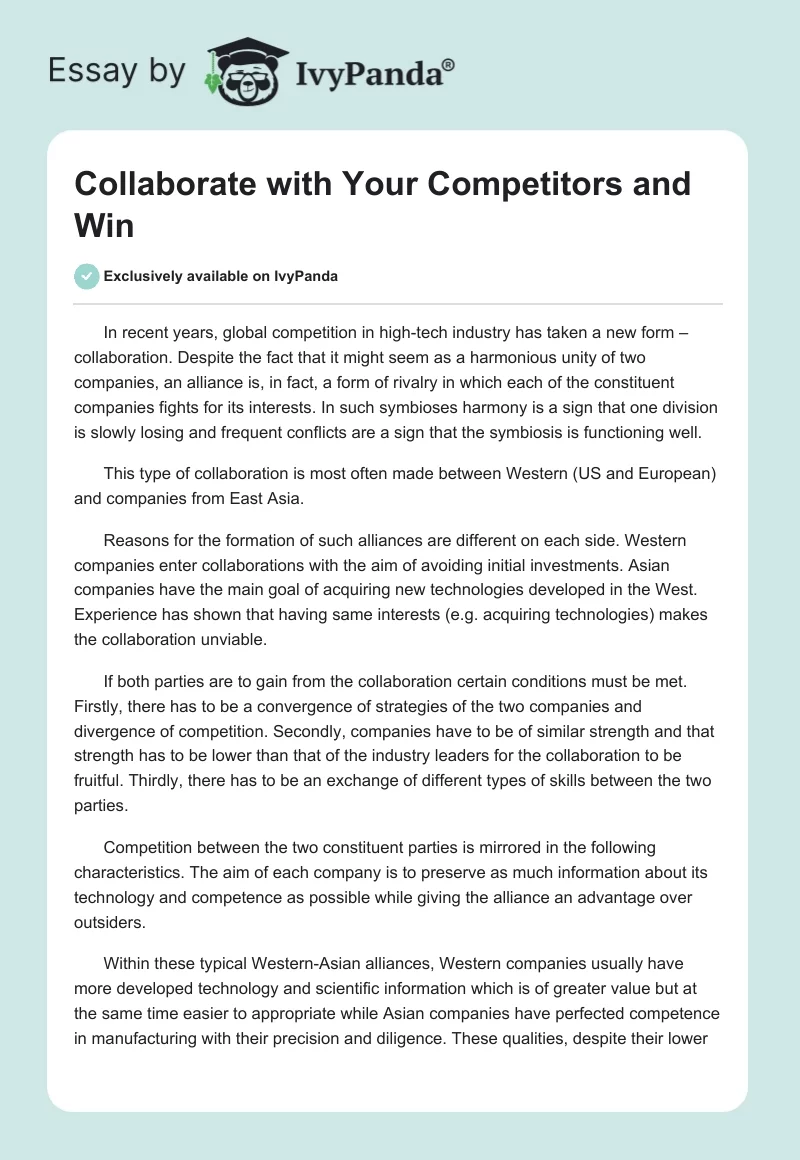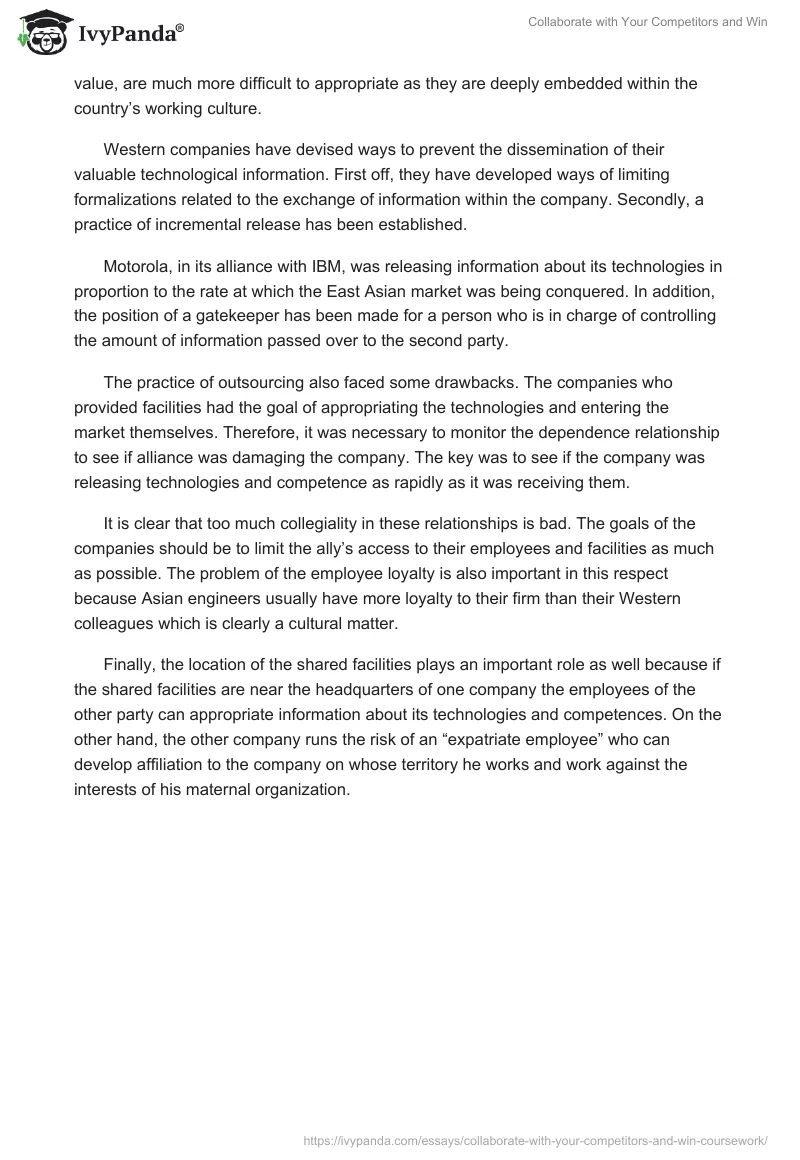In recent years, global competition in high-tech industry has taken a new form – collaboration. Despite the fact that it might seem as a harmonious unity of two companies, an alliance is, in fact, a form of rivalry in which each of the constituent companies fights for its interests. In such symbioses harmony is a sign that one division is slowly losing and frequent conflicts are a sign that the symbiosis is functioning well.
This type of collaboration is most often made between Western (US and European) and companies from East Asia.
Reasons for the formation of such alliances are different on each side. Western companies enter collaborations with the aim of avoiding initial investments. Asian companies have the main goal of acquiring new technologies developed in the West. Experience has shown that having same interests (e.g. acquiring technologies) makes the collaboration unviable.
If both parties are to gain from the collaboration certain conditions must be met. Firstly, there has to be a convergence of strategies of the two companies and divergence of competition. Secondly, companies have to be of similar strength and that strength has to be lower than that of the industry leaders for the collaboration to be fruitful. Thirdly, there has to be an exchange of different types of skills between the two parties.
Competition between the two constituent parties is mirrored in the following characteristics. The aim of each company is to preserve as much information about its technology and competence as possible while giving the alliance an advantage over outsiders.
Within these typical Western-Asian alliances, Western companies usually have more developed technology and scientific information which is of greater value but at the same time easier to appropriate while Asian companies have perfected competence in manufacturing with their precision and diligence. These qualities, despite their lower value, are much more difficult to appropriate as they are deeply embedded within the country’s working culture.
Western companies have devised ways to prevent the dissemination of their valuable technological information. First off, they have developed ways of limiting formalizations related to the exchange of information within the company. Secondly, a practice of incremental release has been established.
Motorola, in its alliance with IBM, was releasing information about its technologies in proportion to the rate at which the East Asian market was being conquered. In addition, the position of a gatekeeper has been made for a person who is in charge of controlling the amount of information passed over to the second party.
The practice of outsourcing also faced some drawbacks. The companies who provided facilities had the goal of appropriating the technologies and entering the market themselves. Therefore, it was necessary to monitor the dependence relationship to see if alliance was damaging the company. The key was to see if the company was releasing technologies and competence as rapidly as it was receiving them.
It is clear that too much collegiality in these relationships is bad. The goals of the companies should be to limit the ally’s access to their employees and facilities as much as possible. The problem of the employee loyalty is also important in this respect because Asian engineers usually have more loyalty to their firm than their Western colleagues which is clearly a cultural matter.
Finally, the location of the shared facilities plays an important role as well because if the shared facilities are near the headquarters of one company the employees of the other party can appropriate information about its technologies and competences. On the other hand, the other company runs the risk of an “expatriate employee” who can develop affiliation to the company on whose territory he works and work against the interests of his maternal organization.


